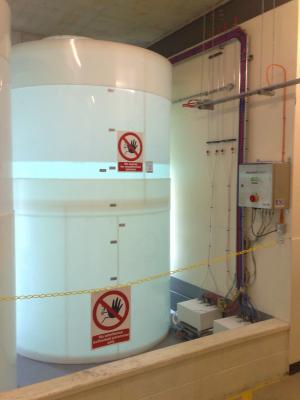Key learning point:
Central Acid Delivery can reduce acid and packaging waste, saving just over 16,000 kg of CO2 annually as well as over £23,000 per year
Setting/Patient Group: Dialysis Unit
Issue to be addressed:
The dialysis unit was previously supplied with 6 litre plastic cans of dialysate acid solution through weekly orders. These were delivered on pallets and could not be stacked to save on storage space.
Approximately 50,00 litres of dialysate acid is wasted annually due to different flow rates for different patients. Additionally, the empty cannisters were disposed of via the clinical waste stream costing approximately £2,363/year
Intervention: Renal technicians proposed a move to a central acid delivery which was implemented, delivering acid to a dialysis unit in bulk load and pumped into holding tanks. The acid was then distributed to all dialysis machines via a piped loop system.
Outcome:
Social:
- Not documented
Environmental:
- Reduced acid wastage, saving 8,330 kgCO2e/year
- Reduced packaging waste, saving 7,699 kgCO2e/year
Economic:
- £19,372 saved annually from reduced acid wastage
- £3,700 saved annually from reduced packaging waste
- Total: £23,072 per year

Please log in or sign up to comment.